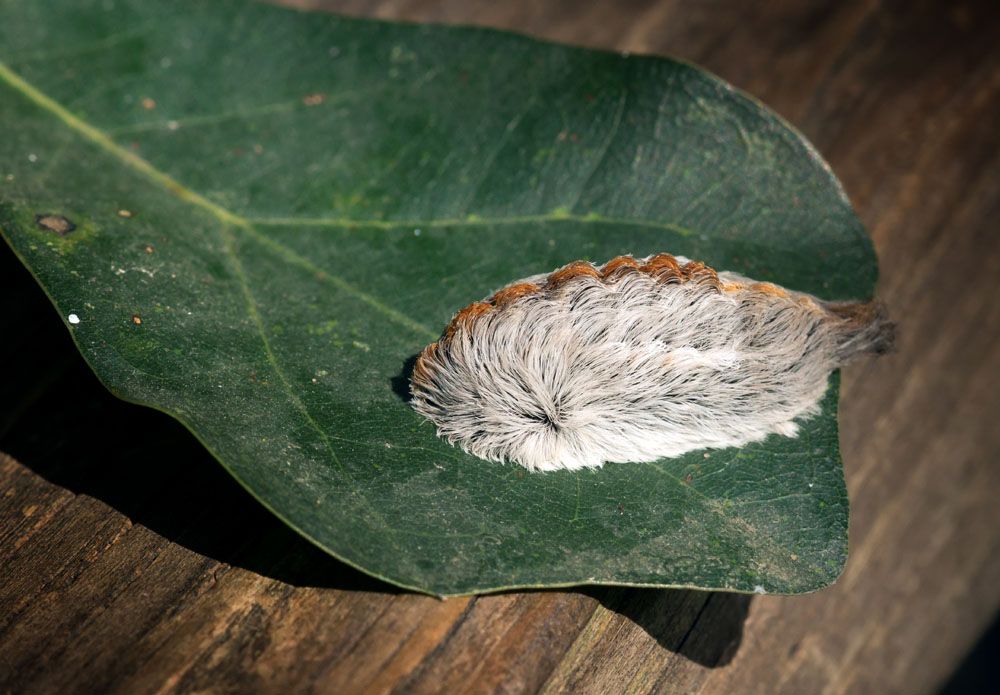
Puss Caterpillar – Megalopyge opercularis
Puss Caterpillar (Megalopyge opercularis)
Common Name: Puss Caterpillar
Latin Name: Megalopyge opercularis
Appearance:
The Puss Caterpillar is a southern flannel moth larva. It is distinguished by its remarkable look, which resembles a little, fluffy cat. Despite its pleasing appearance, the caterpillar is coated in poisonous spines that, when touched, can cause serious responses in people. It has a thick covering of fine hairs and a varied hue that generally includes shades of brown or grey.
Host Plants:
The Puss Caterpillar feeds on a variety of deciduous trees and shrubs present in its environment, including oak, elm, citrus, and other plants.
Territory:
The Puss Caterpillar is mostly found in the southern United States, including states with warm climates like Florida and Texas.
Damages caused by Puss Caterpillar:
While the Puss Caterpillar itself does not cause substantial harm to plants, its poisonous spines can be dangerous to people. Contact with these spines can cause a painful response characterized by swelling, redness, and other symptoms.
Life Experiences and Habits:
Eggs: The adult southern flannel moth lays eggs on host plant leaves.
Larva: The Puss Caterpillar larva emerges from the eggs and grows through multiple instars while eating on the leaves of host plants. The caterpillar is coated in poisonous spines during its larval stage.
Pupa: When a caterpillar matures, it pupates in a cocoon, which is commonly attached to a branch or other surfaces.
Adult Moth: The adult southern flannel moth emerges after pupation. The adult moth does not have the same striking look as the caterpillar stage.
